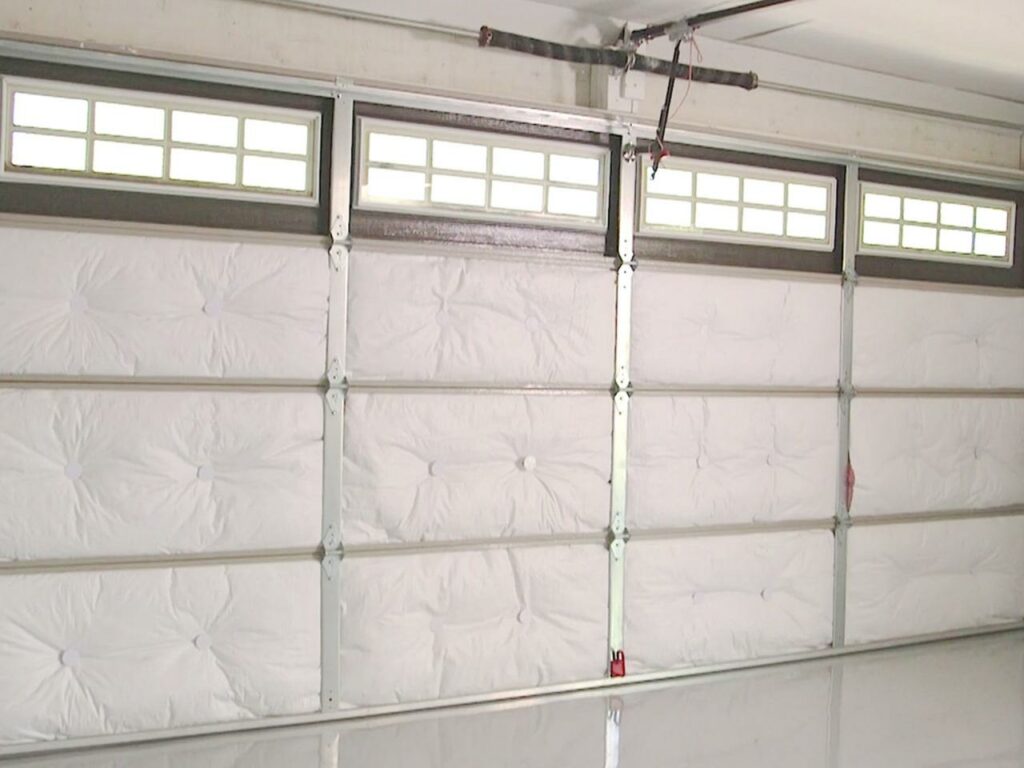Best Way To Insulate a Garage Door
Have you ever considered turning your garage into a home gym or hang-out space? Insulating a garage door is a great way to protect your garage and home from seasonal climate changes. Insulated garage doors retain indoor heat in the winter and cold air during the summer, protecting your home from changing temperatures.
If you’re planning your insulation project, you should understand a few essential factors before you start. Knowing how much insulation to install, what kind of insulation to use, and how to install new insulation will help you understand how to insulate garage doors from cold and heat.
How To Tell If My Garage Door Is Insulated
Before you insulate your garage door, check whether your garage door is already insulated. An insulated door will have foam boards visible from the side in the same place the door’s hinges attach to the lifting mechanism.
Another way to tell is by looking at the garage’s design. If you can see the garage door panels’ designs on the entire door from both the inside and the outside, your garage doesn’t have insulation. However, if the inside side of your garage is a flat surface with no visible panel design, then you already have insulation.

Does an Insulated Garage Door Make a Difference?
Adding insulation may not be your top concern when constructing your home or renovating the garage, but it is an essential consideration. Installing insulation can seal air gaps in your garage door and protect your home from temperature extremes, keeping your garage cooler in the summer and warmer in the winter. Additionally, keeping seasonal temperatures at bay inside your home is a great way to reduce energy bills.
Another worthy consideration is adding weather stripping to make a weatherproof garage door. If you install weather stripping, you significantly reduce the risk of lost energy and increasingly expensive bills.
Which Garage Door Insulation Is Best
Not every type of insulation is suitable for every garage. Picking the proper insulation depends on various factors, such as how your garage and home connect and what level of insulation you require. Typically, the closer your garage is to living spaces, the higher the effectiveness level, or R-value, your insulation will need.
Which R-value To Pick
- Detached garages (0-6): Garages separate from your house don’t require as high an R-value. As a result, detached garages only need insulation with an R-value of 0-6.
- Attached garages (7-9): A garage attached to a home requires a slightly higher R-value so that seasonal weather changes don’t adversely affect home utilities. For these garages, pick insulation with an R-value of 7-9.
- Heated garages (10-13): Garages with heating require insulation with R-values of 10-13.
- Garages below a living space (14+): Finally, garages below living spaces need the highest R-value insulation. To maintain climate control in this space, use insulation with an R-value of 14+.
Different Types of Insulation
Most insulation is rigid foam board insulation, the cheapest and often most accessible option. Board insulation tends to range in R-value from 4.6 to 5.8 per inch of thickness. Batt insulation, made of flexible foam rolls or strips, ranges from 4.7 to 6.45.
How To Insulate a Garage Door for Winter
While insulation is a job best left to professionals, it’s still crucial to understand the installation process. One of the best features of garage door insulation is that the process is essentially the same whether installing foam board or batt insulation.
Step-by-Step Instructions
- Pick the proper insulation. The first step in insulation installation is picking the correct type of insulation, which we’ve already covered above.
- Mark the door. Now that you have the proper insulation, measure 12 inches from each side of the door panel and make a mark. You’ll place the retaining pins on these marks.
- Apply adhesive. Next, apply an adhesive to the marks.
- Attach retaining pins to the adhesive. Get the retainer clips or pins on which you’ll hang insulation and attach them to the adhesive.
- Measure and cut the insulation. With the retaining pins connected to the door, it’s time to grab your tape measure and measure your door panels. Wear a dust mask and cut your foam board or batting insulation to size.
- Place insulation in door panels and fasten retention clips. Finally, attach your insulation to the panels of your garage door and secure them with the retention clips. Open the garage with your garage door opener to ensure the insulation maintains a straight edge.
Garage Door Insulation With German Garage Doors
Stop wondering how to insulate the garage door from heat and hire German Garage Doors. Call (832) 479-1743 or visit our website.

Recent Comments